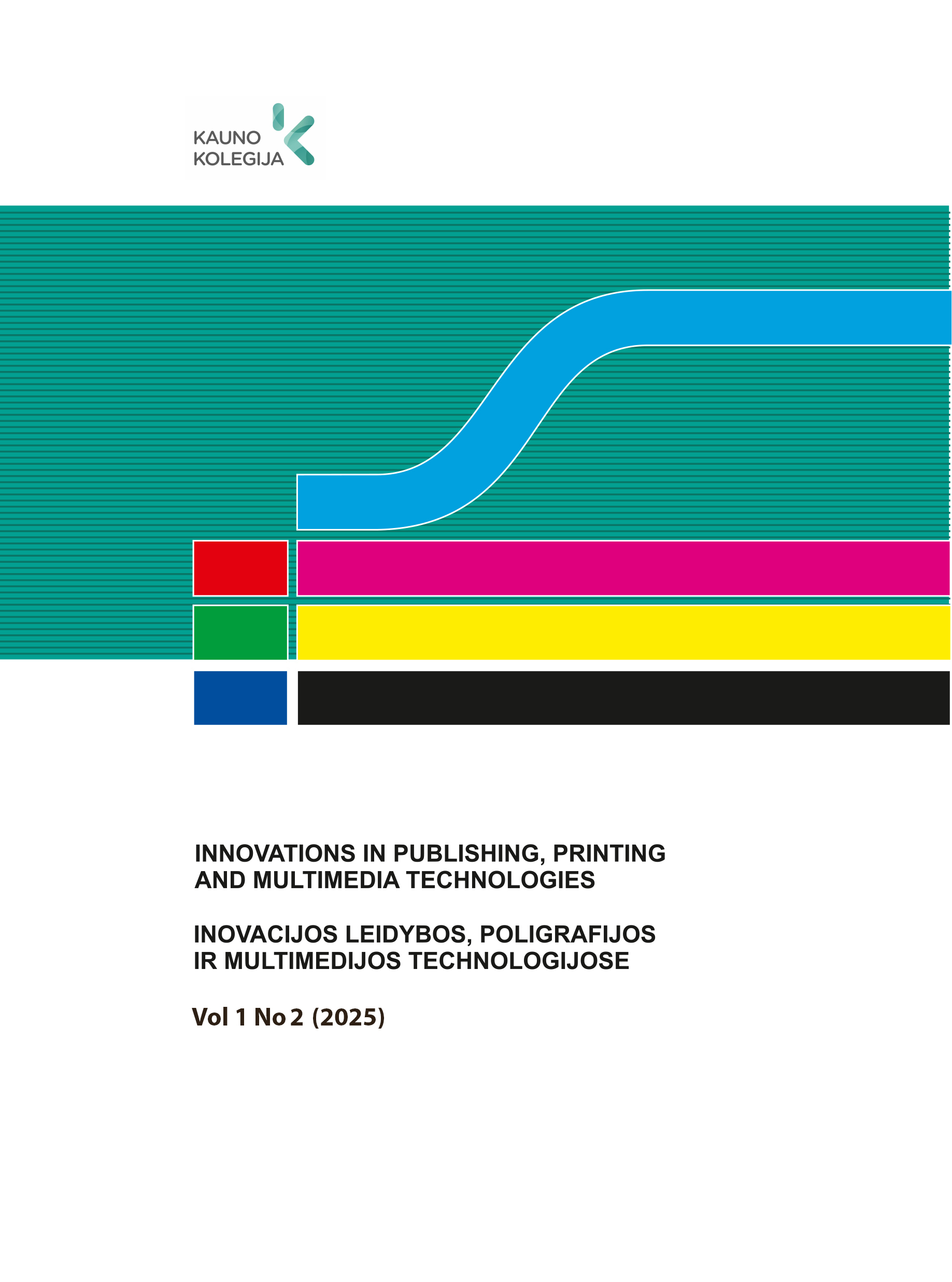Study of optimal conditions for the production of paper barrier packaging by the flexographic printing method
DOI:
https://doi.org/10.59476/ilpmt2025.v1i2.5-11Keywords:
barrier coating, flexographic printing, paper packaging, varnishAbstract
Increasing environmental pollution from plastic packaging, especially multi-layer films that are difficult to recycle, necessitates the search for effective ecological alternatives. Simultaneously, modern packaging requirements include enhanced barrier properties to meet global logistics needs and long-term product storage. A promising solution is the creation of paper packaging with functional coatings, particularly barrier coatings and heat seal varnishes. The study aimed to determine the optimal technological conditions for creating such packaging using flexographic printing.
The research was conducted on an Optima 2 flexographic printing press manufactured by Soma Engineering, using an additional IPU (Intelligent Printing Unit) section. Two types of paper with grammage of 70 g/m² and 80 g/m² from different suppliers were tested. A water-based heat seal varnish based on copolymer dispersion and a barrier primer were used to provide the paper with barrier and heat-sealing properties. The study included experiments with various combinations of functional varnishes, printing speeds (100-300 m/min), types of ink pumps, and forms of anilox roller cells. Parameters such as dry residue content, oil resistance, and heat-sealing strength at different temperature regimes and sealing conditions were evaluated.
It was determined that the best results are achieved with the combined application of barrier varnish followed by heat seal varnish at a speed of 100 m/min. Measurements showed that paper with lower grammage (70 g/m²) and lower smoothness can accept more varnish during printing (2.8 g/m² vs 2.3 g/m² for barrier varnish and 5.9 g/m² vs 5.4 g/m² for heat seal varnish). The barrier varnish provided excellent oil resistance (5 points after 1 hour of exposure), which remained high (3 points) even after 24 hours of exposure. Heat sealing studies showed that optimal sealing is achieved at temperatures of 130–210 °C with a clamp width of 25 mm and a clamping time of 0.5 seconds.
It was established that using an anilox roller cell produced with GTT technology and a peristaltic pump significantly reduces foam formation and improves varnish transfer in the printing unit’s ink system. It was determined that the quality of paper packaging sealing is significantly affected by the clamp width and sealing time, with an increase in both factors improving adhesion strength. The practical result of the research is the developed technology for creating environmentally friendly paper packaging with enhanced barrier properties against moisture and fats, which can also be effectively heat sealed. This approach allows for the replacement of multi-layer plastic packaging materials with ecological paper alternatives without losing functional properties.
References
1. Aghamohammadi, G. (2023). The functional properties of the coating lacquers in disposable cup-making: master’s thesis. https://urn.fi/ URN:NBN:fi-fe2023061656261.
2. Chiu, H. T., Chang, C. Y., Pan, H. W., Chiang, T. Y., Kuo, M. T., & Wang, Y. H. (2012). Characterization of polyurethane foam as heat seal coating in medical pouch packaging application. Journal of Polymer Research, 19, 1-12.
3. Hishinuma, K. (2009). Heat sealing technology and engineering for packaging: principles and applications. DEStech Publications, Inc.
4. Ilhan, I., Turan, D., Gibson, I., & ten Klooster, R. (2021). Understanding the factors affecting the seal integrity in heat sealed flexible food packages: A review. Packaging Technology and Science, 34(6), 321-337.
5. Mostyka, K. V., Koptyukh, L. A., & Osyka, V. A. (n.d.). Analysis Requirements for Paper Packaging for Food. Technology Audit and Production Reserves, 6(4), 29-35.
6. Netramai, S., Kijchavengkul, T., & Kittipinyovath, P. (2016). Use of Paper in Food Packaging Applications. Reference Module in Food Sciences. Edition: 1st. Elsevier.
Downloads
Published
Issue
Section
License
Copyright (c) 2025 Tetyana Telegina, Svitlana Havenko, Marta Labetska

This work is licensed under a Creative Commons Attribution 4.0 International License.

